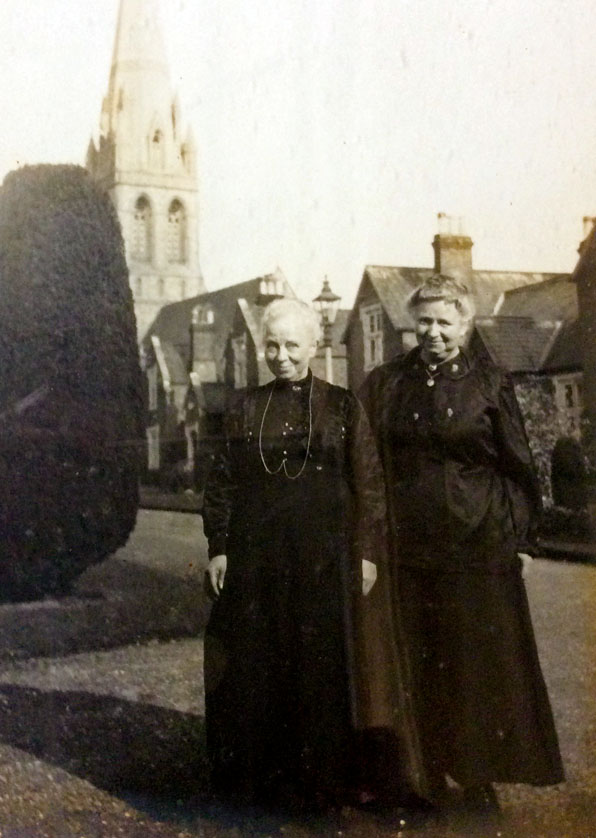Community researcher – Jane Chappell
Nineteenth-century housing for the poor was notoriously cramped and unsanitary. In 1862 the new Exeter Free Cottages must have felt like a luxury holiday village to the first residents. John Dinham’s aim, to provide spacious and comfortable homes, was achieved by George Cumming’s design and the use of quality vernacular materials. Even the grounds were landscaped by the prestigious Veitch family. But these were not built for high-earning city executives but for ‘retired tradespeople’ and ‘deserving poor’.
John Dinham’s intention was to use his wealth to provide housing, education and a place of worship to local people with low incomes who lived Godly lives. He purchased the land to prevent it from being the site of fairs and associated immoral practices. He was deeply pious and a practising Christian nearing the end of his life. Early residents may have signed the Pledge of Temperance.
The forty-four cottages have been continually occupied by older and retired local people. Couples and relatives had larger properties, and usually single females in smaller ones, sometimes with a servant or companion. In 1891, Jane Sawtell, a former governess from Somerset, lived at Number 40 with her mother and a servant. Ten years later she resided with just a servant and in 1911 she shared her dwelling with her cousin and a servant . Servants were usually teenage girls.
Two larger detached properties flank the large Episcopal Charity School which Dinham had built to rehouse some of the children’s schools funded by charity donations. These properties became known as the School House and Dinham House. A succession of headmasters, headmistresses, teachers and their families lived there. In the 1880s, there was Walter Miller’s family of five, he was an ‘elementary schoolmaster’. Anne King followed in the 1870s and Esther Yeo in the 1910s. Both were headmistresses.
From the start, a gardener was employed to maintain the fine grounds and gardens. Among them was Charles Chanter who, with his wife Martha, lived in the detached Gardener’s Lodge (Cottages 41 and 42). Before long an assistant, George Sclater, was needed.
Mount Dinham’s residents had usually worked locally in respectable trades. Some occupations hardly changed over time such as teachers. Men had also worked as clerks, grocers, booksellers, cabinet makers, upholsterers and cashiers. Women had been bookkeepers, often dressmakers, jewellery assistants, milliners and, intriguingly, there was an Ostrich feather dresser!
In 1965, a new cottage was built by Sydney Row. This marked the end of his forty year role as a trustee, and added two flats, Numbers 43 & 44. Since the 1930s, occupants were mostly single and retired but the cottages’ conditions deteriorated. In 2000 Mount Dinham’s properties were granted Grade II listing.
In 2020 the cottages were advertised: ‘Applications for the 1 and 2 bedroom dwellings at affordable rents, are invited from people over 60 with modest savings and connections to Exeter’.
Cornerstone has managed Mount Dinham Cottages since 2012 and is currently rebuilding and refurbishing the cottages to provide modern amenities and retain character, to the delight of contemporary residents. Margaret Coppin has lived at Number 34 for 18 years. Her husband was a lay chaplain for Devon prisons. After moving out for alteration work, she has new bathroom facilities, central heating and insulation. Barbara Carver is also enjoying her superior kitchen and new doors. One resident moved in less than a year ago from nearby council accommodation. They all enjoy the sense of community that Mount Dinham provides.
